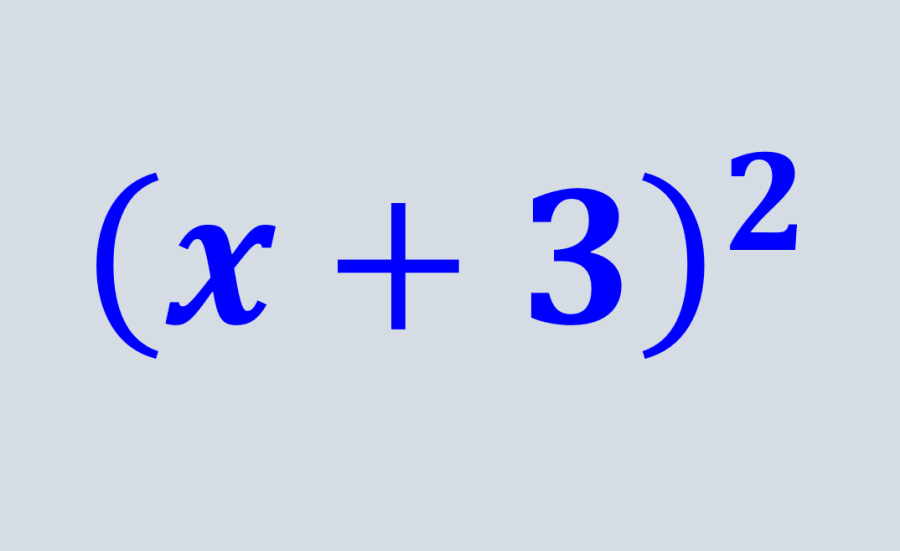In some special cases, it is possible to factor polynomials using the perfect square trinomial. This technique allows us to factor these types of polynomials easily and use factoring to find the roots or solutions to a problem.
Here, we will do a brief review of the perfect square trinomial. We will look at how to identify these trinomials and how to apply this technique. In addition, we will explore several perfect square trinomial examples with answers in order to fully master the use of this factoring technique.
Summary of perfect square trinomial
The perfect square trinomial is a special type of factoring that can be used to solve algebraic equations.
Remember that a trinomial is an algebraic expression composed of three terms that are connected by addition or subtraction. Similarly, a binomial is an expression made up of two terms. Therefore, a perfect square trinomial can be defined as an expression that is obtained by squaring a binomial.
To recognize a perfect square trinomial, we take into account the following:
- The first and last terms must be perfect squares
- The middle term must be twice the product of the square roots of the first and last terms.
Once we have identified a perfect square trinomial, we follow the following steps to factor:
Step 1: Identify the square numbers in the first and last terms of the trinomial.
Step 2: Examine whether the middle term is positive or negative. If the middle term is positive, the factors will have a plus sign and if the middle term is negative, the factors will have a minus sign.
Step 3: We write the terms applying the following identities:
$latex {{a}^2}+2ab+{{b}^2}={{(a+b)}^2}$
$latex {{a}^2}-2ab+{{b}^2}={{(a-b)}^2}$
Perfect square trinomial – Examples with answers
The following perfect square trinomial examples use the technique and steps detailed above to arrive at the solution. Try to solve the exercises yourself before looking at the solution.
EXAMPLE 1
Factor the trinomial $latex {{x}^2}+6x+9$.
Solution
Step 1: We can write the trinomial as follows:
$latex {{x}^2}+6x+9={{(x)}^2}+6x+{{3}^2}$
Step 2: In this case, the middle term is positive, so the factors will have a plus sign.
Step 3: Applying the formula $latex {{a}^2}+2ab+{{b}^2}={{(a+b)}^2}$, we have:
$latex {{(x)}^2}+6x+{{3}^2}={{(x+3)}^2}$
EXAMPLE 2
Factor the expression $latex {{x}^2}+10x+25$.
Solution
Step 1: We rewrite the trinomial as follows:
$latex {{x}^2}+10x+25={{(x)}^2}+10x+{{5}^2}$
Step 2: Here, the middle term is positive. This means that the factors will have a plus sign.
Step 3: Using the formula $latex {{a}^2}+2ab+{{b}^2}={{(a+b)}^2}$, we have:
$latex {{(x)}^2}+10x+{{5}^2}={{(x+5)}^2}$
EXAMPLE 3
Factor the trinomial $latex {{x}^2}-8x+16$.
Solution
Step 1: To better visualize we write the trinomial as follows:
$latex {{x}^2}-8x+16={{(x)}^2}-8x+{{4}^2}$
Step 2: The middle term is negative, so the factors will have a minus sign.
Step 3: Using the formula $latex {{a}^2}-2ab+{{b}^2}={{(a-b)}^2}$, we have:
$latex {{(x)}^2}-8x+{{4}^2}={{(x-4)}^2}$
EXAMPLE 4
Factor the expression $latex 4{{x}^2}+4x+1$.
Solution
Step 1: We write as follows:
$latex 4{{x}^2}+4x+1={{(2x)}^2}+4x+{{1}^2}$
Step 2: Here, the factor will have a plus sign since the middle term is positive.
Step 3: Applying the formula $latex {{a}^2}+2ab+{{b}^2}={{(a+b)}^2}$, we have:
$latex {{(2x)}^2}+4x+{{1}^2}={{(2x+1)}^2}$
EXAMPLE 5
Factor the expression $latex 25{{y}^2}-10y+1$.
Solution
Step 1: We rewrite the expression to better visualize:
$latex 25{{y}^2}-10y+1={{(5y)}^2}-10y+{{1}^2}$
Step 2: We have the middle term with a negative sign, so the factors will have a minus sign.
Step 3: Using the formula $latex {{a}^2}-2ab+{{b}^2}={{(a-b)}^2}$, we have:
$latex {{(5y)}^2}-10y+{{1}^2}={{(5y-1)}^2}$
EXAMPLE 6
Factor the expression $latex 9{{x}^2}+\frac{3}{2}x+\frac{1}{16}$.
Solution
Step 1: We can write the trinomial as follows:
$$9{{x}^2}+\frac{3}{2}x+\frac{1}{16}={{(3x)}^2}+\frac{3}{2}x+{{(\frac{1}{4})}^2}$$
Step 2: We have the factors with a positive sign since the middle term is positive.
Step 3: Applying the formula $latex {{a}^2}+2ab+{{b}^2}={{(a+b)}^2}$, we have:
$latex {{(3x)}^2}+\frac{3}{2}x+{{(\frac{1}{4})}^2}={{(x+\frac{1}{4})}^2}$
EXAMPLE 7
Factor the expression $latex {{x}^4}-10{{x}^2}{{y}^2}+25{{y}^4}$.
Solution
Step 1: We can write the trinomial as follows:
$$ {{x}^4}-10{{x}^2}{{y}^2}+25{{y}^4}={{({{x}^2})}^2}+6x+{{(5{{y}^2})}^2}$$
Step 2: Here, we have a positive sign on the factor.
Step 3: Applying the formula $latex {{a}^2}+2ab+{{b}^2}={{(a+b)}^2}$, we have:
$latex {{({{x}^2})}^2}+6x+{{(5{{y}^2})}^2}={{({{x}^2}+5{{y}^2})}^2}$
Perfect square trinomial – Practice problems
Test your knowledge of the perfect square trinomial by factoring the following trinomials. Select an answer and check it to see if you got the correct one.
See also
Interested in learning more about the factorization of polynomials? Take a look at these pages:




